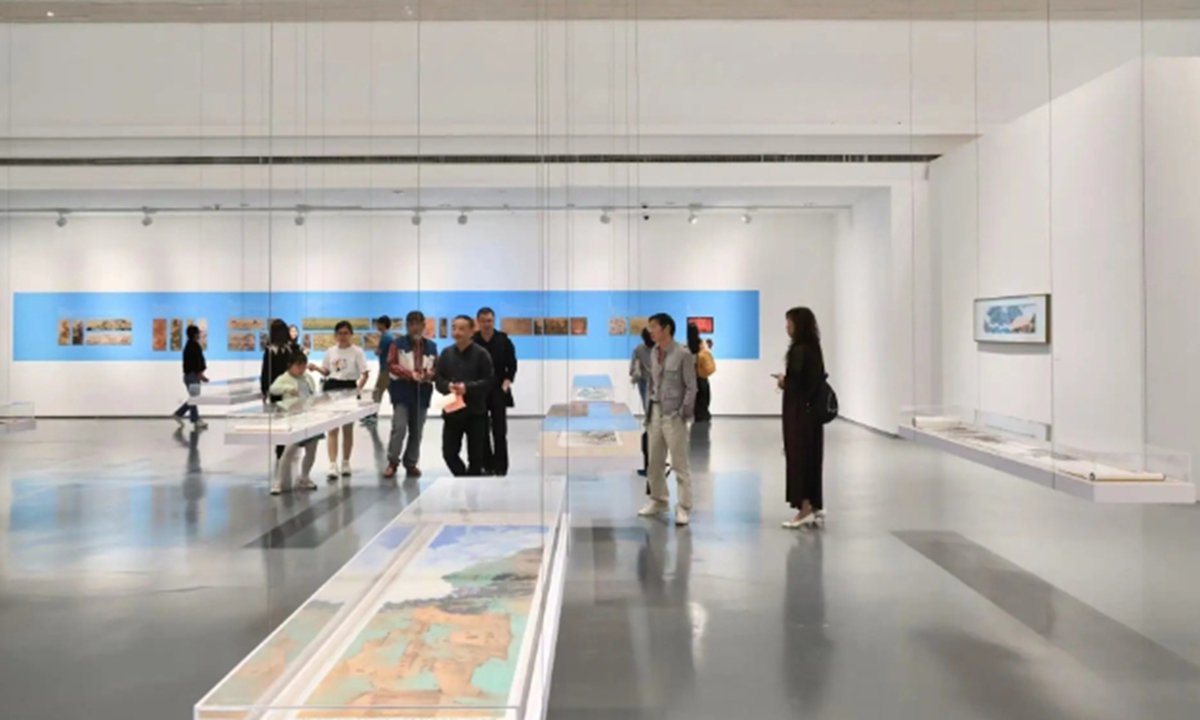This past Saturday, the halls of the Suzhou Art Museum, located in East China’s Jiangsu Province, echoed with whispers of admiration and profound introspection. Art enthusiasts, scholars, and everyday visitors converged to witness the inauguration of the “Scenery and Color: 2023 Contemporary Green Landscape Painting Academic Invitational Exhibition.” This gathering underscored not only the enduring allure of Chinese landscape painting but also its ongoing evolution in the contemporary era.
Divided meticulously into two segments, the exhibition presents an array of both albums of paintings and hand scrolls. It is a vast collection, boasting 101 captivating pieces created by 99 eminent painters hailing from diverse regions of the country. Of this collection, 42 pieces are intricately designed albums, while the remaining 59 are exquisite hand scrolls, each narrating a unique tale of nature’s splendor.
The art of landscape painting stands as a hallmark of Chinese cultural heritage. It is more than mere representation; these paintings capture the essence of China’s historical and aesthetic values. The strokes, techniques, and motifs employed in these artworks delve deep into the reservoirs of traditional Chinese ethos, bringing forth profound cultural narratives and mirroring the aesthetic principles cherished by the Chinese populace.
Xu Jun, the esteemed vice president of the Chinese Painting Institute, shed light on the significance of this art form in the exhibition’s preface. He emphasized the concept of “greenery” as an iconic visual element in classical landscape painting. In the vast timeline of Chinese artistry, this vibrant hue emerges as a beacon, symbolizing the dynamic interplay between nature and culture. It paints a historical canvas, where harmony and beauty merge seamlessly, celebrating the spirit of the landscapes that have been immortalized over centuries.
However, the “Scenery and Color” exhibition aims to transcend mere visual allure. Beyond the immediate sensory delights it offers, there lies a deeper intent: to communicate the evolving aesthetic spirit of contemporary times. The sand hand scrolls, which depict verdant landscapes, serve as a testament to this very endeavor, bridging the gap between time-honored traditions and the sensibilities of today.
Complementing the visual spectacle was an enriching academic dimension. The organizers orchestrated a salon, which saw participation from over 50 scholars and artists from across the nation. This intellectual gathering fostered an atmosphere of vibrant discourse, where participants deliberated on the legacy of green landscape painting. Conversations revolved around its historical significance, its contemporary adaptations, and the path it’s poised to tread in the future.
In essence, the Suzhou Art Museum’s recent exhibition stands as a testament to the enduring legacy and contemporary relevance of green landscape painting. It invites visitors to embark on a journey – one that traverses through history, culture, and the ever-evolving realm of artistic expression.
READ MORE:
